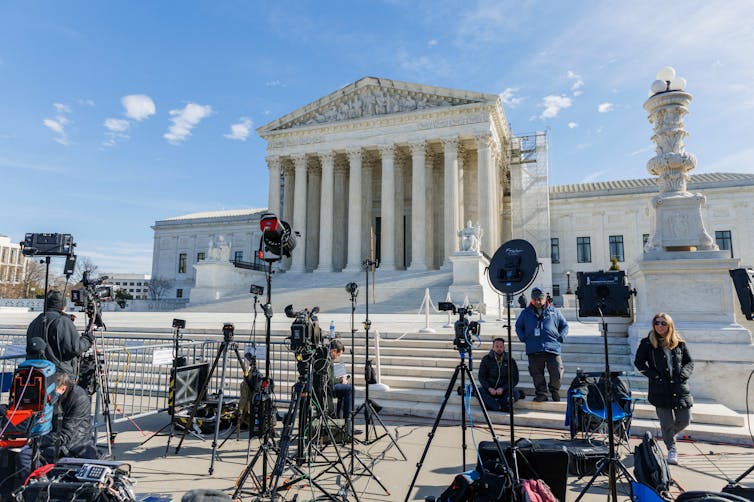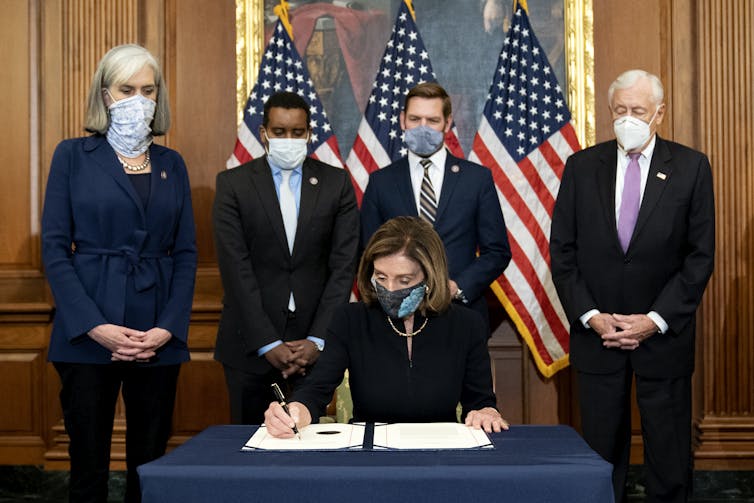
Unwind // Shutterstock
Years ago, Kyle Selbach was visiting a home to talk to its owner about pest control services. "He had two roaches on the bill of his hat," recalled Selbach, director of operations at All "U" Need Pest Control in Fort Myers, Florida. "I was losing my mind."
After continuing the conversation for a little while, Selbach finally interrupted and told the man what he was seeing. The man took off his hat, but then "he just flung the roaches off and put the hat right back on," said Selbach, still surprised all this time later.
But ignoring a pest problem won't make it go away — and might just make it worse.
The ConsumerAffairs Research Team sought to determine how common various pests are in American homes, and what people have done — and are willing to do — about them. The team analyzed data from the U.S. Census Bureau's American Housing Survey, collected every two years, from 2015 to 2021, and conducted a survey of a nationally representative sample of 2,000 people on related issues in February 2024. The survey found that, despite apathy and resistance from residents to spending money on home infestations, those who have dealt with pest issues have faced high expenses and unintended consequences.
Homeowners fighting pests most often battled rodents and roaches
The survey found that an estimated one-third of people who spent money in the past year to fight pests in their homes spent more than $1,000. Infestations can also lead people to throw out damaged or soiled items, renovate their homes or, in extreme cases, move out of their homes entirely. Health issues are another risk — 16% of Americans report experiencing health issues as a result of pest infestations, ConsumerAffairs found.
Making matters worse, 17% of Americans say they have been judged by friends or family for having pests in their homes, according to the ConsumerAffairs survey.
Despite the potential for serious consequences, an estimated 12% of people say they would not be willing to spend any money to fight a pest infestation. And when faced with an actual problem, 17% of people say they take no action at all.
"Some people — believe it or not — literally don't care," Selbach said.
Harrowing experience
In general, the data shows that rats and mice are most common in U.S. homes, closely followed by cockroaches. Much less prevalent is mold, and even rarer are bedbugs. But bedbugs spark the most fear among residents, followed by rats, mold, cockroaches and mice, in that order.
Having pests in the home can be disruptive, embarrassing and unhealthy. Selbach said some treatment processes, such as fumigation, can be unpleasant for people to be around. Even when placing baits and traps around a home, he tells customers, "It's going to get worse before it gets better because we're stirring them up."
According to the ConsumerAffairs survey, 12% of Americans have had to move out of their homes temporarily because of a pest issue, and another 7% said they had to leave their homes for good. About 14% reported needing renovations to get their infestation under control.
Cockroaches and rodents can trigger allergies and asthma, and they spread germs that contaminate food, said Changlu Wang, an extension entomologist at Rutgers University. Mice and rats can also carry fleas and mites that spread disease.
Ignoring the pests can make the problem worse, Wang said. Many of the people he has surveyed over the years have had infestations for long periods before they took action. And in many cases, neighbors' homes were the sources of the pests.
In a 2018-2019 survey of low-income apartment residents in New Jersey, Wang and his colleagues found that 56% of homes had at least one pest. He recommends that renters tell their landlords so they can take care of the problem — and that landlords who get resident complaints about pests check with all the neighbors in the building — to prevent the spread of an infestation.
Fighting back
Usually people try to fight pests on their own, Selbach said, and sometimes those measures work. "What's driving [the pests into the home] is the humidity change," he explained. "They're usually looking for more moisture than is available outside but also some nearby dry surfaces to inhabit, and gravitate to rooms with heavy water usage."
That lines up with the ConsumerAffairs survey, which found that about two-thirds of residents with mold problems find these fungal infestations in their kitchens or bathrooms.
Once they're in the home, pests can find plenty of food that is easier to access than in outdoor settings, Selbach said, noting that even the cleanest homes have some crumbs on the floor. That's why the pests stick around.
People try different ways to get rid of the problem: 57% of those surveyed by ConsumerAffairs reported trying store-bought pest control products, and 30% tried various home remedies, which Selbach says can even include essential oils.
By the time someone calls in an expert, Selbach said, they have likely tried a range of unsuccessful approaches. "Typically they're calling when they've thrown in the towel," he said.
People most often turn to pest control products to control infestations
Wang said many of the sprays, bombs and ultrasonic repellers that are on the market don't actually work. He recommended people check with experts about what works, such as gel-based cockroach baits and standard snap traps for mice and rats. Wang himself uses snap traps to control the mice that periodically try to get into his garage and shed. They are cheap and reusable, he said, as long as you wear protective gloves while handling the traps.
Then again, according to the ConsumerAffairs survey, 17% of Americans say they take no action about the pests in their homes.
Wang said there are two reasons people might not act: "Either they financially cannot afford it, or they have lived with that environment from a young age, so they are less concerned about the presence of pests."
It gets expensive
Pests can be costly — a lot more costly than people may hope.
About two-thirds of the residents who have fought pests in their home in the past year paid up to $1,000 to address the problem. And another 30% spent between $1,001 and $5,000.
Yet the ConsumerAffairs survey found 12% of people wouldn't be willing to spend anything to address a rat or mouse infestation, while 14% said the same for cockroaches and 12% said the same about mold.
"People are willing to spend on emotion," Selbach said. Once they're desperate, they'll have the mindset of 'I'll spend whatever to get rid of it,'" he said.
Preventive measures can save you money—and headaches—in the long run
Selbach emphasizes, though, that preventive treatment is less expensive than removing an infestation. Many people first call to get rid of a problem and then sign up for periodic services to make sure it doesn't return.
He estimated that having an expert take care of roaches can cost $500, and rats about $1,000. Once the problem is gone — or if a homeowner is taking steps in advance of identifying a problem — an initial maintenance visit costs around $200, with quarterly visits costing another $120 or so, he said.
Wang said he has found people often go to extremes when it comes to pests, but not always for the best.
"There are two extremes," he said. "One is they don't do anything and let the pests prosper. The other extreme is people get overprotective and use too many chemicals. Then you either waste money or contaminate the environment."
This story was produced by ConsumerAffairs and reviewed and distributed by Stacker Media.


